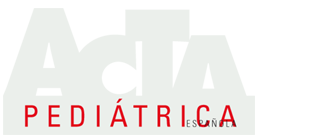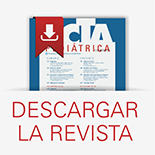Volumen 73 - Número 1 - Enero 2015
Publicado en
Originales
¿Es el peso de las mochilas escolares lo que ocasiona dolor de espalda a los niños de 10-11 años de edad?
Does the weight of backpacks cause backache in 10-11 year-old children?
C. Pires1, F. Esquivel2, M. Felipe3, L. Lemes4, A. Montero5, P. Montes de Oca6, T. Romero7, J.C. Sánchez2Departamento de Pediatría. Servicio Andaluz de Salud. 1Centro de Salud (CDS) Algodonales (Cádiz). 2CDS Ubrique (Cádiz). 3CDS Espera (Cádiz). 4CDS Olvera (Cádiz). 5CDS Alcalá del Valle (Cádiz). 6CDS Villamartín (Cádiz). 7CDS Prado del Rey (Cádiz)














